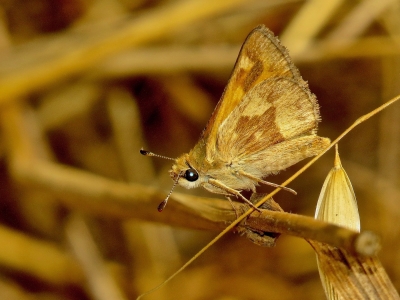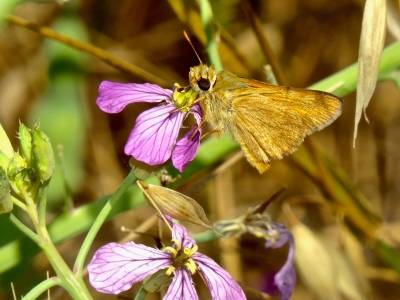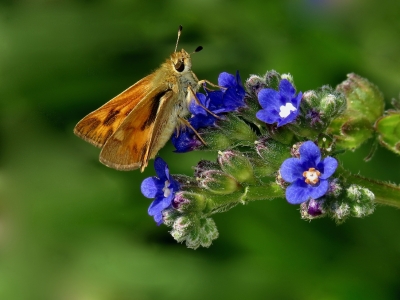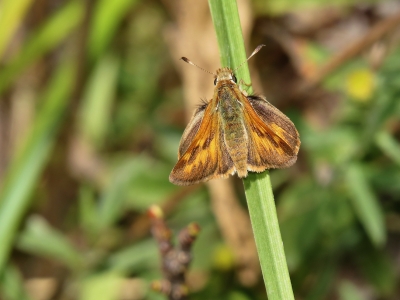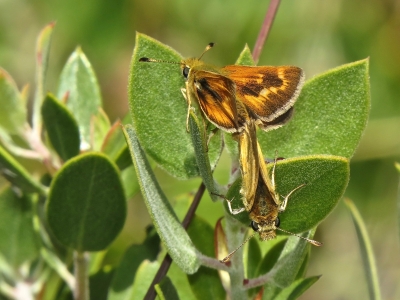Woodland Skipper (Ochlodes sylvanoides) is a small butterfly, with a wingspan of 1 to 1.25 inches. In our local area, it can be seen from the end of June through October. Numbers peak in August and September. In many parts of our local area, it can be the most abundant butterfly seen in September and October. Host plants are various grasses including Bermuda Grass (Cynodon dactylon), Canary Grass (Phalaris), Wildrye (Elymus), and Wheatgrass (Agropyron).
This is the last of five Grass Skippers on the Garden’s species list. They all use grasses of some kind as host plants, and also share a similar orange-brown coloration. Another common characteristic of Grass Skippers is how the forewing and hindwing are laid out one above the other rather than side-by-side, like all other butterflies. When they spread their wings, the hindwing is fully open and parallel to the ground, with the forewing at a 45-degree angle to the hindwing. In many parts of the US, it can be challenging to identify grass skippers to species level, especially if the specimen is a little worn. For a perfect example of how difficult it can be, compare the upper sides of male and female Fiery Skipper with those of Field Skipper.
Woodland Skippers follow the same “Is This Seat Taken?” model of courtship as Fiery Skippers do. The male comes and perches next to the female. He disappears and reappears several times, inching closer each time. The female moves from perch to perch, and the male moves with her. At a later stage, the male starts nudging the female, touching the upper surface of her wings and the rear of her abdomen with his head and antennae. At this stage, the female encourages the male by vibrating her wings.
It is found in the western half of North America.

